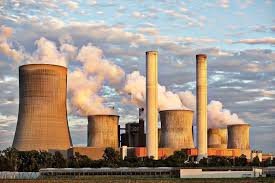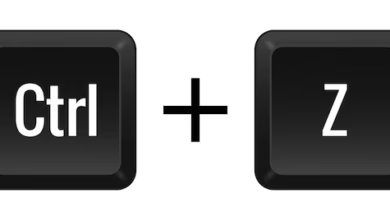Understanding Point Source Pollution: What It Is, Why It Matters, and How We Can Control It

What Is Point Source Pollution?
Point source pollution refers to contaminants that enter the environment from a single, identifiable source. Think of a factory’s discharge pipe dumping wastewater into a river, or a sewage treatment plant releasing effluent into the ocean. The key characteristic of point source pollution is that it comes from a specific location, making it much easier to monitor and regulate compared to non-point source pollution, which is more diffuse.
This type of pollution typically includes industrial waste, chemicals, heavy metals, and sewage. It’s most common in areas where factories, wastewater treatment facilities, or oil refineries are present. While this form of pollution is easier to trace, that doesn’t necessarily mean it’s easy to manage. The scale of discharge and the type of pollutants can vary, leading to significant environmental and health impacts if not properly treated.
One of the advantages of identifying pollution sources as “point source” is regulatory clarity. Governments and environmental agencies can pinpoint the exact culprit and enforce standards or improvements. This is a big reason why environmental laws, such as the U.S. Clean Water Act, are structured around controlling point source discharges. However, despite regulatory efforts, many facilities still fall short of best practices, either due to outdated technology or lax enforcement.
Common Examples and Sources of Point Source Pollution
You might be surprised at how many different operations can act as point sources of pollution. Industrial plants, power stations, sewage treatment plants, and even confined animal feeding operations (CAFOs) are all major contributors. Each of these sources discharges pollutants directly into a waterway, air system, or the land.
Let’s start with industrial facilities. These are probably the most familiar type of point source, especially when we imagine a smokestack or a pipe flowing into a river. These facilities often handle hazardous materials—heavy metals, solvents, oils—and even with treatment systems in place, leaks and accidents can still happen. Long-term exposure or improper treatment of such waste can severely impact aquatic ecosystems and contaminate drinking water supplies.
Next up, municipal wastewater treatment plants. While these facilities are essential for handling sewage, they can also be sources of pollution, especially when overwhelmed by stormwater or when outdated infrastructure leads to accidental releases. The discharges often contain nitrogen and phosphorus, which can lead to algal blooms and oxygen-depleted zones in water bodies.
CAFOs are another major contributor. While you might not think of farms as point sources, large-scale animal farming operations produce massive quantities of waste. When not properly managed, this waste can flow through ditches or pipes into nearby water bodies, leading to serious nutrient pollution and contamination from pathogens like E. coli.
Environmental Impacts of Point Source Pollution
Point source pollution can have devastating effects on the environment, especially when it involves long-term discharge of hazardous substances. The most immediate impact is often seen in water bodies, where pollutants can alter the chemical composition of the water, making it unsafe for fish, plants, and even humans.
Aquatic ecosystems are incredibly sensitive to changes in water quality. For instance, if a factory releases wastewater containing high levels of ammonia or heavy metals, it can lead to fish kills and the disruption of entire aquatic food chains. Over time, this kind of pollution can reduce biodiversity, eliminate native species, and promote the growth of invasive organisms.
Another critical issue is the formation of dead zones. When nutrients like nitrogen and phosphorus enter water systems, they fuel rapid algae growth. Once the algae die, they decompose, using up oxygen in the process. This creates hypoxic conditions—areas where aquatic life can’t survive. The Gulf of Mexico, for instance, has one of the largest dead zones in the world, largely due to nutrient runoff and point source discharges from upstream states.
Beyond water, air pollution from point sources like power plants and manufacturing facilities can also lead to respiratory problems in humans, acid rain, and climate change. In short, point source pollution may be localized at the origin, but its impacts ripple far beyond.
Legal and Regulatory Frameworks
Governments around the world have developed laws to control and manage point source pollution, with varying degrees of success. In the United States, the Clean Water Act (CWA) of 1972 stands out as a landmark piece of legislation that directly addresses this issue. Under the CWA, the National Pollutant Discharge Elimination System (NPDES) requires facilities to obtain permits before discharging pollutants into U.S. waters.
These permits set specific limits on what kind of pollutants can be released, how much, and under what conditions. Facilities are also required to regularly monitor their discharges and report findings to environmental agencies. If they fail to comply, they can face hefty fines or even be shut down.
Other countries have similar frameworks. In the European Union, the Water Framework Directive plays a significant role in managing water quality and holding polluters accountable. In developing countries, regulations may exist on paper but can be harder to enforce due to lack of resources or political will.
While regulations are helpful, enforcement remains a critical challenge. In many regions, environmental agencies are underfunded or understaffed, which limits their ability to inspect facilities and ensure compliance. That’s why public pressure, transparency, and technology—like satellite monitoring—are becoming increasingly important in fighting pollution.
Solutions and Prevention Strategies
Thankfully, there are a variety of effective ways to reduce or eliminate point source pollution. The first and most obvious method is the use of treatment technologies. Wastewater treatment plants, for example, can implement advanced filtration and chemical treatment processes that remove harmful substances before the water is released.
For industrial operations, the implementation of cleaner production techniques can significantly reduce the generation of pollutants in the first place. This might include recycling water within the facility, replacing toxic substances with safer alternatives, or investing in closed-loop systems that eliminate the need for discharge entirely.
Regulatory measures can also incentivize change. Offering tax breaks or grants for companies that upgrade their pollution control systems can make compliance more attractive. In the long run, these investments not only help the environment but can also reduce operational costs and improve community relations.
Community involvement plays a crucial role as well. Citizen science projects, local watchdog groups, and environmental NGOs often provide the extra push needed to hold polluters accountable. Whether it’s through water quality testing or public reporting platforms, the average person has more power than ever to contribute to cleaner environments.
Final Thoughts: The Ongoing Battle Against Point Source Pollution
Point source pollution might sound like a technical term, but its effects touch every one of us—from the quality of the water we drink to the health of the ecosystems we depend on. While it’s easier to identify and control compared to non-point source pollution, that doesn’t mean the fight is over.
Thanks to environmental laws, public awareness, and technological advancements, we’ve made major progress over the past few decades. Rivers once labeled as “biologically dead” are now teeming with life again. But we still have work to do—especially in developing nations and regions where enforcement is weak or infrastructure is outdated.
Point source pollution the key takeaway? Prevention is always better than cleanup. Whether you’re an industrial manager, a policymaker, or just someone who cares about the planet, understanding the dynamics of point source pollution is the first step to making better decisions and pushing for real change.
YOU MAY ALSO READ
